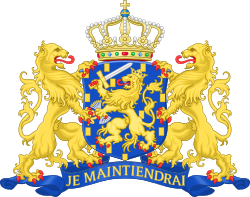First Colijn cabinet | |
|---|---|
| Cabinet of the Netherlands | |
| Date formed | 4 August 1925 |
| Date dissolved | 8 March 1926 (Demissionary from 11 November 1925) |
| People and organisations | |
| Head of state | Queen Wilhelmina |
| Head of government | Hendrikus Colijn |
| No. of ministers | 9 |
| Member party | General League Anti-Revolutionary Party Christian Historical Union |
| Status in legislature | Centre-right majority government |
| History | |
| Election | 1925 general election |
| Legislature terms | 1925–1929 |
| Incoming formation | 1925 Dutch cabinet formation |
| Outgoing formation | 1925–1926 Dutch cabinet formation |
| Predecessor | Second Ruijs de Beerenbrouck cabinet |
| Successor | First De Geer cabinet |
| Part of the Politics series |
 |
|---|
| |
The First Colijn cabinet was the cabinet of the Netherlands from 4 August 1925 until 8 March 1926. Prime Minister Colijn and his cabinet had tendered their resignations on 11 November but remained in a caretaker government until Dirk Jan De Geer formed a new government on 8 March. [1] The cabinet was formed by the political parties General League of Roman Catholic Electoral Associations (AB), Anti-Revolutionary Party (ARP) and the Christian Historical Union (CHU) after the 1925 general election. The centre-right cabinet was a majority government in the House of Representatives. It was the first of five cabinets of Hendrikus Colijn, the Leader of the Anti-Revolutionary Party as Chairman of the Council of Ministers. [2] [3] [4] [5] [6]






